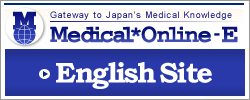| 書籍名 |
Evidenceに基づく急性白血病・リンパ腫診療マニュアル |
| 出版社 |
日本医学館
|
| 発行日 |
2004-04-15 |
| 著者 |
- 平井久丸(編集)
- 神田善伸(執筆)
- 伊豆津宏二(執筆)
|
| ISBN |
4890445536 |
| ページ数 |
|
| 版刷巻号 |
第1版第1刷 |
| 分野 |
|
| 閲覧制限 |
未契約 |
執筆者の背景を反映し、本書からは強く現場の生のメッセージが伝わってくる。一方、evidenceに基づいた基本的な知識が、幅広くきわめて的確に紹介されている。臨床血液学の初学習のマニュアルとして、非常に完成度の高い優れたのに仕上がっており、血液内科の病棟における必携の書である。
目次
参考文献
[1] 造血器腫瘍の診療総論
P.45 掲載の参考文献
-
4) Group JCO: National Cancer Institute Common Toxicity Criteria (NCI-CTC Version 2.0, April 30, 1999). http://www.jcog.jp/SHIRYOU/CTCJ_v20revised2001_09.pdf
-
6) Handbook of Cancer Chemotherapy. (ed. 5th edition), (Skeel RT ed. ).
-
7) Ratain MJ: Pharmacology of Cancer Chemotherapy. (ed. 6th Edition), (Devita VT, Hellman S, Rosenberg SA, eds. ). Chapter 19. Principles and Practice of Oncotogy. Lippincott Williams & Wilkins, 2001.
-
8) O'Grady NP, Barie PS, Bartlett JG et al.: Practice guidelines for evaluating new fever incritically ill adult patients. Task Force of the Society of Critical Care Medicine and the Infectious Diseases Society of America. Clin Infect Dis 1998, 26:1042-1059.
-
14) Segal BH, Walsh TJ, Holland SM: Chapter 54: Infections in the Cancer Patient. (ed. 6th Edition), (Devita VT, Hellman S, Rosenberg SA, eds. ) Principles and Practice of Oncology. Lippincott Williams & Wilkins, 2001.
-
15) Dykewicz CA, Kaplan JE: Guidelines for preventing apportunistic infections among hematopoietic stem cell transplant recipients. http://www.cdc.gov/mmwr/PDF/rr/rr4910.pdf
-
16) Pizzo PA, Purvis DS, Waters C: Microbiological evaluation of food items. For patients undergoing gastrointestinal decontamination and protected isolation. J Am Diet Assoc 1982, 81:272-279.
-
17) Uzun O, Anaissie EJ: Antifungal prophylaxis in patients with hematologic malignancies: a reappraisal. Blood 1995, 86:2063-2072.
-
24) Sterner S, Plummer DW, Clinton J, Ruiz E: A comparison of the supraclavicular approach and the infraclavicular approach for subclavian vein catheterization. Ann Emerg Med 1986, 15:421-424.
-
25) Hughes WT, Armstrong D, Bodey GP et al.: 2002 guidelines for the use of antimicrobial agents in neutropenic patients with cancer. Clin Infect Dis 2002, 34:730-751.
-
26) Hughes WT, Armstrong D, Bodey GP et al.: 1997 guidelines for the use of antimicrobialagents in neutropenic patients with unexplained fever. Infectious Diseases Society of America. Clin Infect Dis 1997, 25:551-573.
-
28) EORTC International Antimicrobial Therapy Cooperative Group: Empiric antifungal therapy in febrile granulocytopenic patients. Am J Med 1989, 86:668-672.
-
36) Herbrecht R, Denning DW, Patterson TF et al.: Voriconazole versus amphotericin B forprimary therapy of invasive aspergillosis. N Engl J Med 2002, 347:408-415.
-
39) Munoz L, Balmana J, Martino R, Sureda A, Rabella N, Brunet S: Abdominal pain as the initial symptom of visceral varicella zoster infection in hematopoietic stem cell transplant recipients, Med Clin (Barc)1998, 111:19-22.
-
42) Petros WP: Pharmacokinetics and administration of colony-stimulating factors. Pharmacotherapy 1992, 12:32S-38S.
-
49) Evidence-based medicine. A new approach to teachingthe practice of medicine. Evidence-Based Medicine Working Group. JAMA 1992, 268:2420-2425.
-
51) Evidence Based cardiology. (ed. 2nd Edition). (Yusuf S, Cairns JA, Camm AJ, Fallen EL, Gersh BJ eds. )
[2] 急性白血病の診療
P.88 掲載の参考文献
-
2) Lithotripsy, Health and Public Policy Committee, Anlerican College of Physicians. Ann Intern Med 1985, 103:626-629.
-
7) Second MIC Cooperative Study Group: Morphologic, immunologic, and cytogenetic (MIC) working classification of the acute myeloid leukemias. Report of the Workshop held in Leuven, Belgium, September 15-17, 1986, Cancer Genet Cytogenet 1988, 30:1-15.
-
8) Estey E, Thall P, Beran M, Kantarjian H, Pierce S, Keating M: Effect of diagnosis (refractory anemia with excess blasts, refractory anemia with excess blasts in transformation, or acute myeloid leukemia [AML]) on outcome of AML-type chemotherapy. Blood 1997, 90:2969-2977.
-
10) Champlin R, Gale RP: Acute myelogenous leukemia: recent advances in therapy. Blood 1987, 69:1551-1562.
-
12) Bishop JF, Matthews JP, Young GA et al.: A randomized study of high-dose cytarabine ininduction in acute myeloid leukemia. Blood 1996, 87:1710-1717.
-
13) Weick JK, Kopecky KJ, Appelbaum FR et al.: A randomized investigation of high-dose versus standard-dose cytosine arabinoside with daunorubicin in patients with previously untreated acute myeloid leukemia: a Southwest Oncology Group study. Blood 1996, 88:2841-2851.
-
14) Mayer RJ, Davis RB, Schiffer CA et al.: Intensive postremission chemotherapy in adults with acute myeloid leukemia, Cancer and Leukemia Group B. N Engl J Med 1994, 331:896-903.
-
15) Bloomfield CD, Lawrence D, Byrd JC et al.: Frequency of prolonged remission duration after high-dose cytarabine intensification in acute myeloid leukemia varies by cytogenetic subtype. Cancer Res 1998, 58:4173-4179.
-
16) Berman E, Heller G, Santorsa J et al.: Results of a randomized trial comparing idarubicin and cytosine arabinoside with daunorubicin and cytosine arabinoside in adult patientswith newly diagnosed acute myelogenous leukemia. Blood 1991, 77:1666-1674.
-
17) Wiernik PH, Banks PL, Case DC, Jr et al.: Cytarabine plus idarubicin or daunorubicin as induction and consolidation therapy for previously untreated adult patients with acutemyeloid leukemia. Blood 1992, 79:313-319.
-
19) A systematic collaborative overview of randomized trials comparing idarubicin withdaunorubicin (or other anthracyclines) as induction therapy for acute myeloid leukaemia. AML Collaborative Group. Br J Haemalatol 1998, 103:100-109.
-
20) Zittoun RA, Mandelli F, Willemze R et al.: Autologous or allogeneic bone marrow translantation compared with intensive chemotherapy in acute myelogenous leukemia. European Organization for Research and Treatment or Cancer (EORTC) and the Gruppo Italiano Malattie Ematologiche Maligne dell'AdUltO (GIMEMA) LeUkemia Cooperative Groups. N Engl J Med 1995, 332:217-223.
-
21) Reiffers J, Stoppa AM, Attal M et al.: Allogeneic vs autologous stem cell transplantation vs chelnotherapy in patients with acute myeloid leukemia in first remission:the BGMT 87 study. Leukemia 1996, 10:1874-1882.
-
28) Morishima Y, Kodera Y, Ilirabayashi N et al.: Low incidence of acute GVIID in patientstransplanted with marrow from HLA-A, B, DR-compatible unrelated donors among Japanese. Bone Marrow Transplant 1995, 15:235-239.
-
29) Morishima Y, Morishita Y, Tanimoto M et al.: Low incidence of acute graft-versus-hostdisease by the administration of methotrexate and cyclosporine in Japanese leukemia patients after bone marrow transplantation from human leukocyte antigen compatiblesiblings; possible role of genetic homogeneity. The Nagoya Bone Marrow Transplantation Group. Blood 1989, 74:2252-2256.
-
30) Ohno R, Kobayashi T, Tanimoto M et al.: Randomized study of individualized inductiontherapy with or without vincristine, and of maintenance-intensification therapy between 4 or 12 courses in adult acute myeloid leukemia. AML-87 Study of theJapan Adult Leukemia Study Group. Cancer 1993, 71:3888-3895.
-
31) Miyawaki S, Tanimoto M, Kobayashi T et al.: No beneficial effect from addition of etoposide to daunorubicin, cytarabine, and 6-mercaptopurine in individualized induction therapy of adult acute myeloid leukemial the JALSG-AML92 study. Japan Adult Leukemia Study Group. Int J Hematol 1999, 70:97-104.
-
35) Cassileth PA, Lynch E, Hines JD et al.: Varying intensity of postremission therapy in acute myeloid leukemia, Blood 1992, 79:1924-1930.
-
36) Slovak ML, Kopecky KJ, Cassileth PA et al.: Karyotypic analysis predicts outcome of preremission and postremission therapy in adult acute myeloid leukemia:aSouthwest Oncology Group/Eastern Cooperative Oncology Group Study. Blood 2000, 96:4075-4083,
-
37) Grimwade D, Walker H, Oliver F et al.: The importance of diagnostic cytogenetics on outcome in AML: analysis of 1,612 patients entered into the MRC AML 10 trial. The Medical Research Council Adult and Children's Leukaemia Working Parties. Blood 1998, 92:2322-2333.
-
40) Lowenberg B, Zittoun R, Kerkhofs H et al.: On the value of intensive remission-induction chemotherapy in elderly patients of 65 + years with acute mlyeloid leukemia: a randomized phase III study of the European Organization for Research and Treatment of Cancer Leukemia Group. J Clin Oncol 1989, 7:1268-1274.
-
42) Yanlada K, Furusawa S, Saito K et al.: Concurrent use of granulocyte colony-stimulating factor with low-dose cytosine arabinoside and aclarubicin for previously treated acute myelogenous leukemia: a pilot study. Leukemia 1995, 9:10-14,
-
53) Hiddemann W, Kreutzmann H, StraifKet al.: High-dose cytosine arabinoside and mitoxantrone: a highly effective regimen in refractory acute myeloid leukemia. Blood 1987, 69:744-749.
-
55) Sanz MA, Bonanad S, Sanz GF, Martin G: Carboplatin and etoposide in acute myeloid leukemia. Leukemia 1994, 8:1599-1600.
-
57) Huang ME, Ye YC, Chen SR et al.: Use of all-trans retinoic acid in the treatment of acutepromyelocytic leukemia. Blood 1988, 72:567-572.
-
58) Warrell RP Jr, Frankel SR, Miller WH Jret al.: Differentiation therapy of acute promyelocytic leukemia with tretinoin (all-trans-retinoic acid) . N Engl J Med 1991, 324:1385-1393.
-
63) Fenaux P, Chastang C, Chevret S et al.: A randomized comparison of all transretinoicacid (ATRA) followed by chemotherapy and ATRA plus chemotherapy and the role ofmaintenance therapy in newly diagnosed acute promyelocytic leukemia. The European APL Group. Blood 1999, 94:1192-1200.
-
64) Nucifora G, Larson RA, Rowley JD:P ersistence of the 8;21 translocation in patients with acute myeloid leukemia type M2 in long-term remission. Blood 1993, 82:712-715.
-
68) Kanamaru A, Takemoto Y, Tanimoto M et al.: All-trans retinoic acid for the treatment of newly diagnosed acute promyelocytic leukemia, Japan Adult Leukemia Study Group. Blood 1995, 85:1202-1206.
-
69) Shen ZX, Chen GQ, Ni JH et al.: Use of arsellic trioxide (As2O3) in the treatment of acute promyelocytic leukemia (APL) : II. Clinical efficacy and pharmacokinetics in relapsedpatients. Blood 1997, 89:3354-3360.
-
74) Copelan EA, McGllire EA: The biology and treatment of acute lymphoblastic leukenlia inadults. Blood 1995, 85:1151-1168.
-
75) Iloelzer D, Gokbuget N, Ottmann O et al.: Acute lymphoblastic leukenmia. Hematology 2002-Anlerican Society of Hematology Educational Book 2002, pl62-192.
-
78) Hallbook H, Simonsson B, Ahlgren T et al.: Iligh-dose cytarabine in upfront therapy for adult patients with acute lymphoblastic leukaemia. Br J Haematol 2002, 118:748-754.
-
81) Reiter A, Schrappe M, Ludwig WD et al.: Chemotherapy in 998 unselected childhood acute lynlphoblastic leukenlia patients. Results and conchlsions of the multicenter trial ALL-BFM 86. Blood 1994, 84:3122-3133.
-
83) Hussein KK, Dahlberg S, Head D et al.: Treatment of acute lymphoblastic leukemia in adults with intensive induction, consolidation, and maintenance chemotherapy. Blood 1989, 73:57-63.
-
84) Larson RA, Dodge RK, Burns CP et al.: A five-drug remission induction regimen with intensive consolidation for adults with acute lymphoblastic leukemia:cancer and leukenliagroup B study 8811. Blood 1995, 85:2025-2037.
-
86) Thiebaut A, Vernant JP, Degos L et al.: Adult acute lynlphocytic leukemia study testingchemotherapy and autologous and allogeneic transplantation. A foUow-up report of theFrench protocol LALA 87. Hematol Oncol Clin North Am 2000, 14:1353-1366.
-
88) Attal M, Blaise D, Marit G et al.: Consolidation treatment ofadult acute lynlphoblasticleukemia: a prospective, randomized trial comparing allogeneic versus autologous bonemarrow transplantation and testing the impact of recombinant interleukin-2 after autologous bone marrow transplantation. BGMT Group. Blood 1995, 86:1619-1628.
-
89) Tanimoto M, Miyawaki S, Ino T et al.: Response-oriented individualized induction therapy followed by intensive consolidation and maintenance for adultpatients with acutelymphoblastic leukemia: the ALL-87 study of the Japan Adult Leukemia Study Group (JALSG) . Int J Hematol 1998, 68:421-4291
-
90) Ueda T, Miyawaki S, Asou N et al.: Response-oriented individualized induction therapy with six drugs followed by four courses of intensive consolidation, 1 year maintenance and intensification therapy: the ALL90 study of the Japan Adult Leukenlia Study Group. Int J Hematol 1998, 68:279-289.
-
98) Hoelzer D, Ludwig WD, Thiel E et al.: Improved outcome in adult B-cell acute lymphoblastic leukemia. Blood 1996, 87:495-508.
[3] リンパ腫の診療
P.112 掲載の参考文献
-
2) Medeiros LJ, Carr J: Overview of the role of molecular methods in the diagnosis of malignant lymphomas, Arch Pathol Lab Med 1999, 123:1189-1207,
-
3) Abdel-Reheim FA, Edwards E, Arber DA: Utility of a rapid polymerase chain reaction panel for the detection of molecular changes in B-cell lymphoma. Arch Pathol Lab Med 1996, 120:357-363.
-
4) Greiner TC, Raffeld M, Lutz C et al.: Analysis of T cell receptor-gammagene rearrangements by denaturing gradient gel electrophoresis of GC-clamped polymerase chainreaction products, Correlation with tumor-specific sequences, Am J Pathol 1995 , 146:46-55.
-
6) Jaffe E, Harris N, Stein H et al.: Pathology and Genetics of Tumors of Hamatopoietic and Lymphoid Tissues. Lyon, IARC Press , 2001.
-
8) Greene FL, Page DL, Fleming ID et al.: AJCC cancer staging manual 6th ed. Philadelphia, Springer-Verlag, 2002.
-
10) Yeo W, Chan PK, Zhong S et al.: Frequency of hepatitis B virus reactivation in cancer patients undergoing cytotoxic chemotherapy:a prospective study of 626 patients withidentification of risk factors. J Med Virol 2000, 62:299-307,
-
11) Cheng AL: Steroid-free chemotherapy decreases the risk of hepatitis flare-up in hepatitis B virus carriers with non-Hodgkin's lymphoma. Blood 1996, 87:1202.
-
13) Otieno MW, Banura C, Katongole-Mbidde E et al.: Therapeutic challenges of AIDS-relatednon-Hodgkin's lymphoma in the United States and East Africa. J Natl Cancer Inst 2002, 94:718-732.
P.129 掲載の参考文献
-
4) Fisher RI, Hubbard SM, DeVita VT et al.: Factors predicting long-term survival in diffuse mixed, histiocytic, or undifferentiated lymphoma. Blood 1981, 58:45-51,
-
13) Sparano JA, Weller E, Nazeer T et al.: Phase 2 trial of infusional cyclophosphamide, doxorubicin, and etoposide in patients with poor-prognosis, intermediate-grade non-Hodgkinlymphoma: an Eastern Cooperative Oncology Group trial(E3493). Blood 2002, 100:1634-1640.
-
15) Coiffier B, Haioun C, Ketterer N et al.: Rituximab(anti-CD20 monoclonal antibody)for the treatment of patients with relapsing or refractory aggressive lymphoma:arnulticenter phase II study. Blood 1998, 92:1927-1932.
-
18) Miller TP, LeBlanc M, Spier C et al.: CHOP Alone Compared to CHOP Plus Radiotherapyfor Early Stage Aggressive Non-Hodgkin's Lymphomas:Update of the Southwest Oncology Group (SWOG) Randomized Trial. Blood 2001, 98:724a.
-
23) Velasquez WS, Cabanillas F, Salvador P et al.: Effective salvage therapy for lymphomawith cisplatin in combination with high-dose Ara-C and dexamethasone(DHAP). Blood 1988, 71:117-122.
-
30) Blay J, Gomez F, Sebban C et al.: The International Prognostic Index correlates to survival in patients with aggressive lymphoma in relapse:analysis of the PARMA trial. Parma Group. Blood 1998, 92:3562-3568.
-
33) Kewalramani T, Zelenetz AD, Iledrick EE et al.: High-dose chemoradiotherapy and autologous stem cell transplantation for patients with primary refractory aggressive non-Hodgkin lymphoma:an intention -to-treat analysis. Blood 2000, 96:2399-2304.
-
34) Kluin-Nelemans HC, Zagonel V, Anastasopoulou A et al.: Standard chemotherapy with or without high-dose chemotherapy for aggressive non-Hodgkin's lyrnphoma: randomized phase III EORTC study. J Natl Cancer Inst 2001, 93:22-30.
-
37) Kaiser U, Uebelacker I, Abel U et al.: Randomized study to evaluate the use of high-dosetherapy as part of primary treatment for aggressive lymphoma. J Clin Oncol 2002, 20:4413-4419.
-
38) Taniguchi S, Yamasaki K, Ohno Y et al.: [Dose escalation study of high dose etoposide in autologous hematopoietic stem cell transplantation]. Rinsho Ketsueki 1993, 34:809-814.
-
44) Pedersen-Bjergaard J, Andersen MK, Christiansen DH:Therapy-related acute myeloid leukemia and myelodysplasia after high-dose chemotherapy and autologous stem cell transplantation. Blood 2000, 95:3273-3279,
-
46) Krishnan A, Bhatia S, Slovak ML et al.: Predictors of therapy-related leukemia and myelodysplasia following autologous transplantation for lymphoma:an assessment of risk factors. Blood 2000, 95:1588-1593.
-
51) Vose JM, Bierman PJ, Anderson JR et al.: Progressive disease after high-dose therapy and autologous transplantation for lymphoid malignancy:clinical course and patient followup. Blood 1992, 80:2142-2148.
P.160 掲載の参考文献
-
1) Aisenberg AC: Problems in Hodgkin's disease management, Blood 1999, 93:761-777.
-
9) Hasenclever D, Diehl V: A prognostic score for advanced Hodgkin's disease. N Engl JMed 1998, 339:1506-1514.
-
11) Yuen AR et al.: Comparison between conventional salvage therapy and high-dose therapywith autografting for recurrent or refractory hodgkin's disease. Blood 1997, 89:814-822.
P.172 掲載の参考文献
-
7) Thomas DA, Cortes J, O'Brien S et al.: Hyper-CVAD program in Burkitt's-type adult acute lymphoblastic leukemia. J Clin Oncol 1999, 17:2461-2670.
-
9) Soussain C, Patte C, Ostronoff M et al.: Small noncleaved cell lymphoma and leukemia inadults. A retrospective study of 65 adults treated with the LMB pediatric protocols. Blood 1995, 85:664-674.
-
11) Zinzani PL, Martelli M, Magagnoli M et al.: Treatment and clinical management of primary mediastinal large B-cell lymphoma with sclerosis: MACOP-B regimen and mediastinal radiotherapy monitored by (67) Gallium scan in 50 patients. Blood 1999, 94:3289-3293.
-
17) Zucca E, Bertoni F, Roggero E et al.: The gastric marginal zone B-cell lymphoma of MALT type. Blood 2000, 96:410-419.
-
18) Montalban C, Castrillo JM , Abraira V et al.: Gastric B-cell mucosa-associated lymphoid tissue (MALT) lymphoma. Clinicopathological study and evaluation of the prognostic factors in 143 patients. Ann Oncol 1995, 6:355-362.
-
20) Stein H, Foss HD, Durkop H et al.:CD 30 (+) anaplastic large cell lynlphoma:a review of its histopathologic, genetic, and clinical features. Blood 2000, 96:3681-3695.
-
21) Fahni B, Pileri S, Zinzani PL et al.: ALK+lymphoma:clinico-pathological findings andoutcome. Blood 1999, 93:2697-2706.
-
22) Bekkenk MW, Geelen FA, van Voorst Vader PC et al.: Primary and secondary cutaneous CD 30 (+) lymphoproliferative disorders:a report from the Dutch CutaneousLymphoma Group on the long-term follow-up data of 219 patients and guidehnes for diagnosis and treatment. Blood 2000, 95:3653-3661.
-
23) Chan JK, Sin VC, Wong KF et al.: Nonnasal lymphoma expressing the natural killer cell marker CD 56: a clinicopathologic study of 49 cases of an uncommon aggressive neoplasm. Blood 1997, 89:4501-4513.




